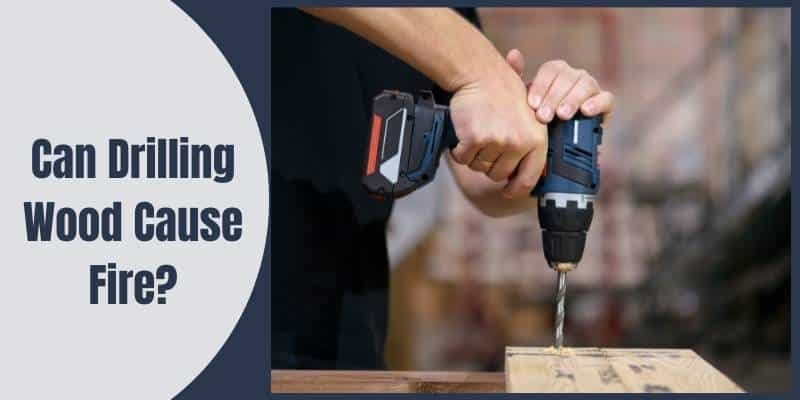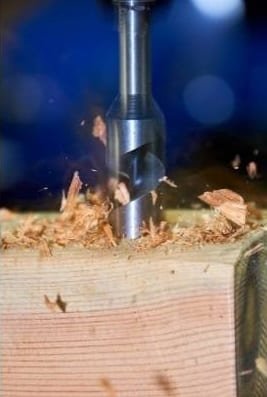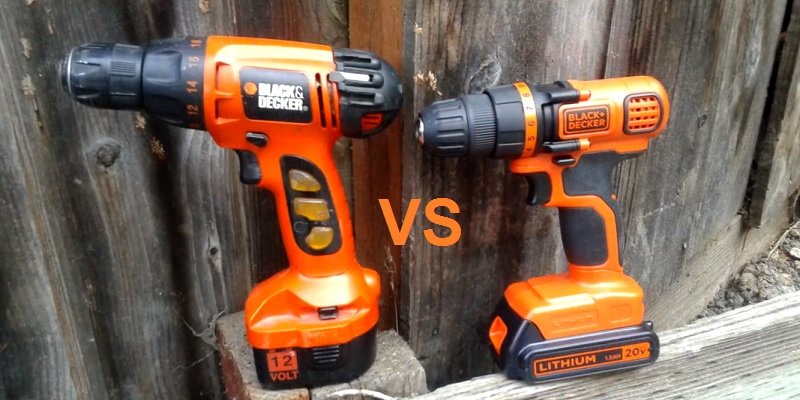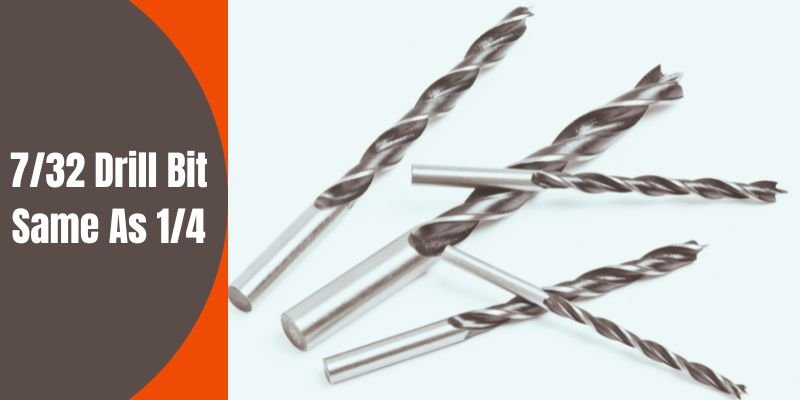Disclosure: This post contains affiliate links and I will be compensated if you make a purchase after clicking through my links. Learn More
Yes, Drilling wood can cause fire and smoke inside the drilling hole. This happens when you don’t follow the guidelines for drilling wood properly. This might include using a bigger drill bit, or using it at a higher RPM than suggested. If you don’t use any lubricant with it, things can get worse.
In this article, we will explain how wood burns, what causes wood to burn when drilling, and what measures you can take to prevent that from happening.

Understand How Wood Burns
Friction can burn almost anything, and if flammable elements are present, it will start to burn. The same goes for wood. Drilling cannot start a fire, it can only create an ignition.
Wood burns due to its combustible and flammable nature. Molecules such as oxygen, carbon, and hydrogen, along with a few other flammable elements inside the wood are to blame.
As you drill holes in the wood, you will notice that it becomes increasingly hot; at first, you may even smell smoke. When the friction exceeds the tolerance level, the temperature inside the hole rises significantly. As a result, the water content of the wood will be reduced, and this will accelerate ignition.
Identify the Causes of Wood Burning When Drilling
From the information above, you know that friction is the reason why wood burns when drilling. Below, we have listed a number of the factors that increase friction when you drill wood, so that you can identify which one is causing issues in your case.
Using the Drill Bits at a Constant High Speed
Generally, drill bits are designed to bore through wood without causing fire. They do not generate or stimulate anything to cause fire, even if you run them at high RPM. But the problem arises when you keep them spinning at a steady pace, far beyond their capacity.
Every drill bit comes with a product label that shows the manufacturer’s recommended speed limit. This is determined by the size and thickness of the drill bit as well as the application in question.
If you continually exceed that limit, the sharpness of your drill bit will be reduced. This will cause a lot of friction and may eventually start a fire.
Using No Lubrication
Another common cause of wood burning when drilling is to avoid using lubricants with the drill bit. If you don’t use any lubrication, it will cause more friction between your drill bit and the wood, making combustion or ignition a more likely outcome.
Using Larger Diameter Drill Bits
Wood burning while drilling can also come from using larger diameter drill bits. Drilling with a large diameter drill bit can cause wood burning. This happens when the drill bit doesn’t keep going into the wood at a consistent pace. As a result, the bit will rotate unevenly into the hole and the metal wall around it will start to burn the wood.
Using a Dull Drill Bit
When you use a dull drill bit, it will fail to efficiently shear fibers at the bottom of the hole, preventing the rest of the bit from following behind. The bit will overheat and burn the wood as a result. Although wood fire from a dull drill bit is not common or particularly hazardous, it will make drilling slow and less effective when compared to a sharpened or new drill bit.
There are many reasons why your drill bit may become dull. However, the two most common reasons are using low-quality drill bits and using them without breaks.
Insufficient Flute Length
When drilling wood, wood chips or flakes can accumulate inside the hole. Their presence in the cavity will increase friction and heat, which can produce smoke. Most drill bits have flutes for removing wood chips. The length of the flute is critical; if it is not long enough, chips will get trapped, resulting in smoke and fire.
Applying Too Much Pressure
When drilling, if you repeatedly press too hard into the same hole or location, you risk starting a fire. You will notice burning marks inside the hole if this occurs.
Not Identifying the Type of Wood
Some woods, such as maple, purpleheart, and cherry, are especially prone to fire. Softwoods such as oak, pine, and cedar are also similar. Furthermore, woods with high sugar content will burn more easily than regular woods when drilling.
Using the Wrong Type of Drill Bit
Some drill bits, for example, cobalt drill bits, are not suitable for drilling wood and using them on wood may lead to fire.
Avoid Wood Burning When Drilling
Professional carpenters have already shared advice with novices in various forums about how to avoid wood burning when drilling. There are a lot of suggestions, but we chose those that seem common and fairly obvious to us.
Select a Suitable Drill and Drill Bit

There are a variety of drills and drill bits available, but to avoid burning wood, you have to choose the one appropriate for your project. Make sure the drill and drill bit you choose are able to deliver the pressure and speed needed for your type of wood. For example, electric and gas drills will not work for hardwood.
In addition, you have to increase the bit hardness as the hardness of the wood increases. You can easily get away with HSS drill bits when drilling softwoods, but when it comes to hardwood, a titanium or black oxide coated option will be necessary.
Select High-Quality Drill Bit
Choosing a high-quality drill bit is just as important as choosing the right type of drill bit. If your wood is heating up faster than it should as you drill it, the drill bit is often the one to blame, not the wood.
Select a Suitable Flute
The flute is the spiral groove cut into the bit that allows wood chips to exit the hole. The length and angle of your drill bit flute should be determined based on the speed of operation and the type of wood you are drilling. When drilling into hardwood, use a long flute with a helix angle.
Select a Suitable RPM
Determining the RPM for a wood drill bit depends on the type of wood being drilled. For hardwood, the RPM should be lower than for softwood. Additionally, if the drill bit is larger, the RPM should be low. The RPM is also determined by the type of drill bit used. Even drill bits of the same diameter can have different RPM requirements. Check out this link to learn about the recommended drill bit speed in hardwood and softwood.
Learn to Adjust the Speed
To avoid burning the wood while drilling, you may need to adjust the speed at which the drill bit is fed into the wood. Sometimes you may need to slow down the speed of the drill bit if it is moving at extreme pace. Conversely, some drill bits, for example, Forstner bits may burn if they are not allowed to advance into the work fast enough.
Lubricate Your Drill Bit
By lubricating the drill bit prior to drilling, you can reduce friction between the bit and the wood. Furthermore, it will extend the life of your drill bit and improve cutting accuracy. There are several retail options available, but make sure that it is a good lubricant for drilling wood, meaning it doesn’t seep into and harm the wood structure. By following these tips, hopefully you can prevent your wood from burning when drilling and get the best possible results.


